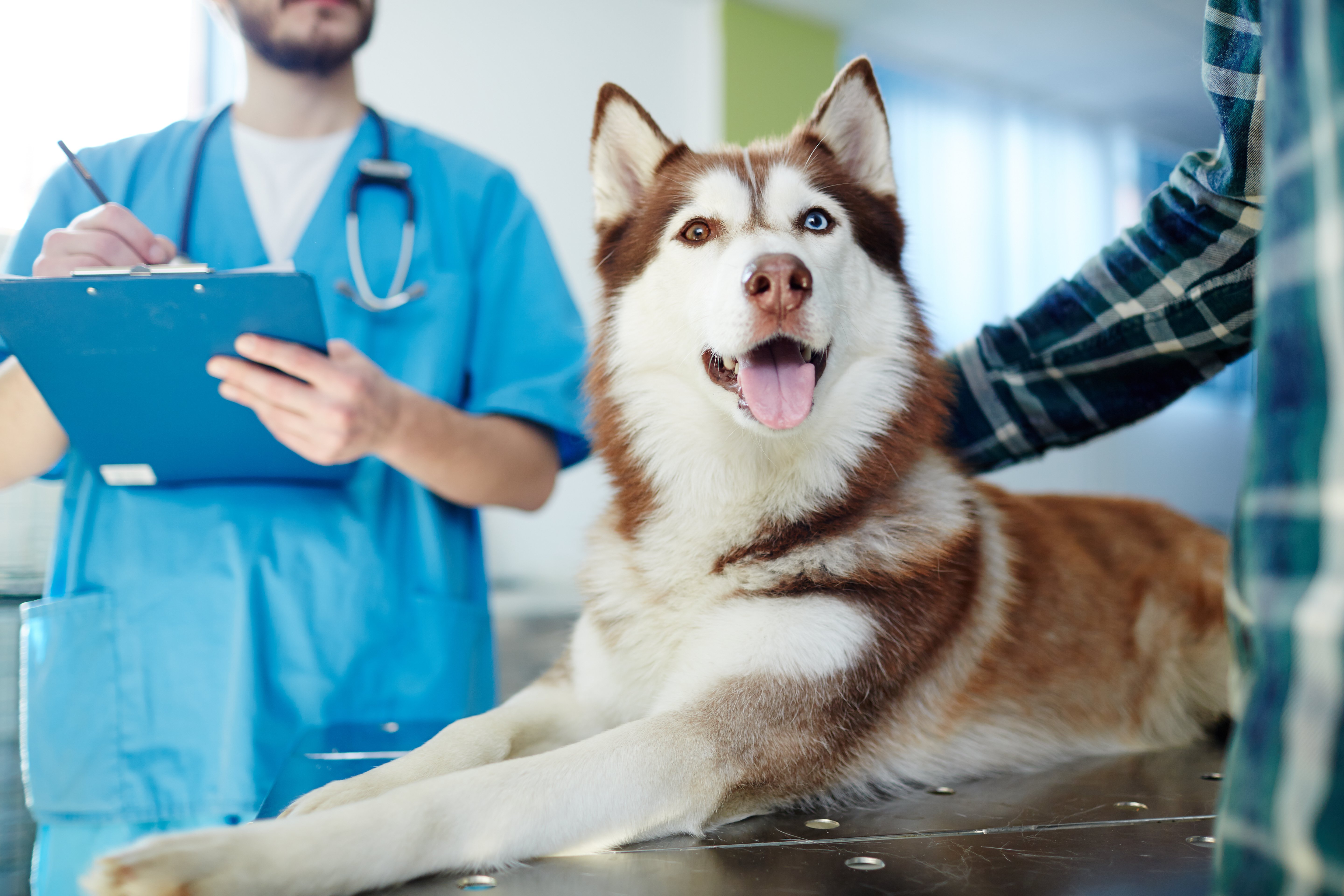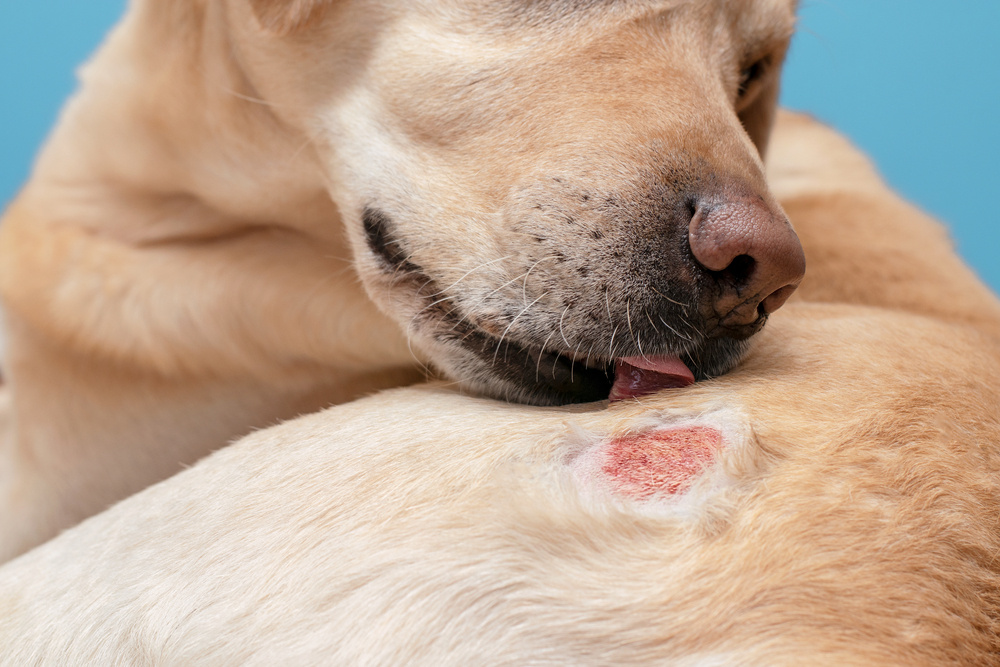
The Skin Barrier in Companion Animals
Atopic dermatitis is a chronic, inflammatory skin disease in dogs and cats that results from a combination of genetic predisposition, environmental allergens, immune dysregulation, and skin barrier dysfunction. Increasing evidence highlights the crucial role of the skin barrier in atopic dermatitis pathogenesis.
The Skin Barrier: A Complex Protective System
The skin barrier is not just a physical shield; it is a dynamic system composed of multiple interdependent components that work together to maintain homeostasis.
1. Physical Barrier Function
The outermost layer of the skin, the stratum corneum, acts as a fortress that prevents excessive water loss (trans-epidermal water loss, TEWL) and shields the body from external insults. This layer is composed of:
- Corneocytes – Flattened, dead keratinocytes that act like "bricks" in the skin's defense.
- Lipid Matrix – Ceramides, cholesterol, and free fatty acids form a structured “mortar” that holds the corneocytes together and maintains waterproofing.
When this structure is compromised, the skin loses moisture and becomes prone to irritation, inflammation, and secondary infections.
2. Immunological Barrier
The skin is an immunologically active organ that detects and responds to microbial and allergenic threats. It contains:
- Langerhans cells – Antigen-presenting cells that activate immune responses against pathogens.
- Keratinocytes – These produce antimicrobial peptides (AMPs) that inhibit bacterial growth.
- Cytokines and Chemokines – Signaling molecules that regulate inflammation and coordinate immune responses.
A weakened barrier can lead to an inappropriate immune response, as seen in atopic dermatitis, where allergens penetrate the skin and trigger excessive inflammation.
3. Microbial Barrier: The Role of Skin Microbiota
The skin is home to a diverse microbial community, including commensal bacteria that help protect against pathogenic overgrowth. A balanced microbiome:
- Competes with harmful microbes for nutrients and space.
- Regulates local immune responses.
- Produces antimicrobial substances to suppress pathogens.
Disruptions in this microbial ecosystem can lead to dysbiosis, predisposing pets to infections like pyoderma or Malassezia dermatitis.
Skin Barrier Defects in Atopic Dermatitis
Research shows that pets with AD have structural and biochemical abnormalities in their skin that impair its protective function. The key changes include:
Defective Lipid Composition
The skin barrier relies on intercellular lipids (ceramides, cholesterol, and fatty acids) to maintain integrity.
- Studies indicate that ceramide levels are significantly reduced in atopic dogs compared to healthy ones (Olivry et al., 2019).
- This defect increases trans-epidermal water loss (TEWL), making the skin more permeable to allergens and irritants.
Disrupted Stratum Corneum (SC) Structure
The stratum corneum, the outermost layer of the epidermis, is often thinner and more fragile in atopic dogs.
- Defective corneocyte adhesion allows allergens (dust mites, pollens, molds) to penetrate more easily, triggering inflammation.
Filaggrin and Epidermal Barrier Proteins
- Filaggrin is a key protein that helps maintain the integrity of the stratum corneum.
- Filaggrin mutations have been linked to barrier dysfunction in atopic humans and dogs (Marsella et al., 2020).
- Other structural proteins, such as involucrin and loricrin, are also reduced, weakening skin resilience.
Increased Microbial Colonization (Staphylococcus & Malassezia)
- The weakened barrier allows pathogenic bacteria (e.g., Staphylococcus pseudintermedius) and yeast (Malassezia pachydermatis) to proliferate.
- Staphylococcal infections further disrupt the barrier, creating a vicious cycle of inflammation, secondary infections, and pruritus.
- Decreased antimicrobial peptide (AMP) production in atopic dogs reduces their ability to fight off infections naturally.
The Consequences of a Compromised Skin Barrier
When the skin barrier is compromised, it sets off a cascade of inflammatory and immune responses that worsen Atopy symptoms:
- Increased Allergen Penetration → Allergens pass through defective skin and activate the immune system.
- Immune Dysregulation → Atopic dogs show an overactive Th2 immune response, leading to increased IL-4, IL-13, and IL-31 production, which fuels pruritus (itching) and inflammation.
- Chronic Itch-Scratch Cycle → Histamine and cytokine release lead to severe itching, causing self-trauma and worsening skin barrier damage.
- Secondary Infections → Damaged skin is vulnerable to bacterial and fungal infections, requiring additional treatments.
The Role of Lipids in Skin Barrier Integrity
Research has shown that ceramides, cholesterol, and free fatty acids play a crucial role in maintaining epidermal barrier function (Marsella & Nicklin, 2021). Deficiencies in these lipids are associated with increased TEWL, making the skin more susceptible to allergens and pathogens (Olivry & Bäumer, 2020).
Strategies for Strengthening the Skin Barrier
- Topicals – Use of lipid-based formulations has been shown to enhance skin barrier function and reduce clinical signs of dermatitis (Nuttall et al., 2020).
- Omega-3 and Omega-6 Fatty Acids – Dietary supplementation can modulate inflammatory responses and improve epidermal lipid composition, supporting long-term skin health. Omega-6 is commonly present in pets
- Microbiome Modulation – Probiotic and postbiotic therapies are emerging as adjunct treatments to promote a balanced skin microbiota and reduce pathogenic colonization (Rodriguez et al., 2021).
Product selection to support a healthy skin barrier
The management of atopic dermatitis in pets requires a combination of topical and systemic therapies aimed at restoring the skin barrier, reducing inflammation, and supporting overall skin health. When it comes to supporting the skin barrier, here are the products to keep on hand:
The Dermoscent Atop 7 range is designed to support skin hydration and help maintain the skin’s natural protective barrier. It includes formulations such as Atop 7 Shampoo and Atop 7 Spot-On, which contain a combination of essential fatty acids and plant-derived ingredients. These products are formulated for pets with allergic prone and sensitive skin and can be used as part of a regular skincare routine.
Allergies are chronic and need lifelong management. Avoiding allergens like dust mites and pollen is ideal but often impractical. Alternatives include immunotherapy, topical treatments and managing flare ups.
Our allergy treatment portfolio is based on a multimodal approach that ensures you treat both cause and symptom and in addition also makes sure the animal gets all the nutrients it needs to stay as healthy as possible.
